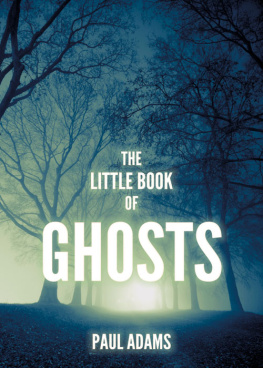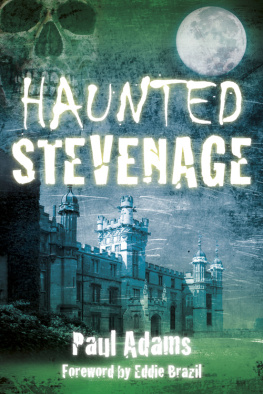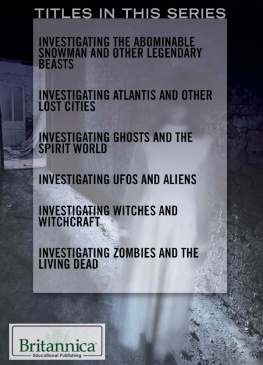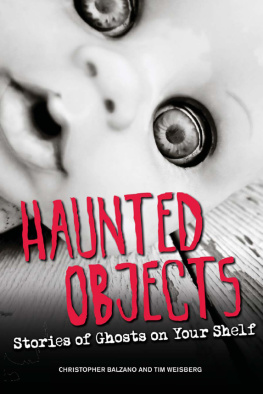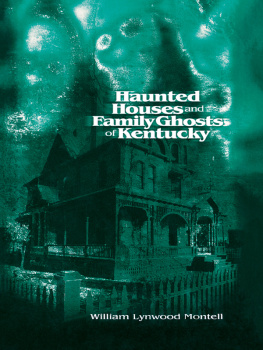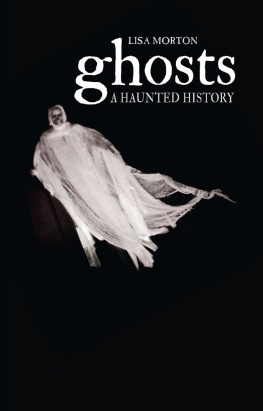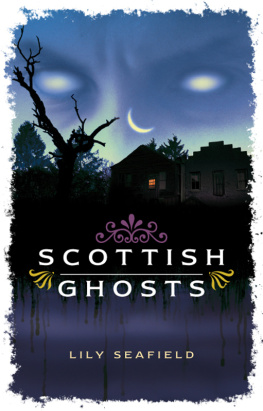
For Aban, Idris, Isa and Sakina
CONTENTS
T his little book is one you might buy for a friend as a present and end up reading yourself. Its subject continues to provoke and fascinate in a technology-obsessed society in which modern science appears to be able to deliver all the answers to questions that, for previous generations, hinted of strange realms beyond the limits of human understanding. Ghosts: who or what are they, why do they appear and where do they come from? This collection contains accounts of many different ghost and supernatural stories drawn from the realms of folklore, ancient and modern history as well as the real-life experiences of ordinary down-to-earth people like you and me. Some can be clearly dismissed as harmless tales; others by their persistence may have some element of the strange or mysterious in them that survives as a grain of truth, but which can be explained away if subjected to a more than superficial glance.
However, some of these ghosts are different. These are the accounts of strange encounters and paranormal experiences that, much to the frustration and chagrin of the hardened sceptic and debunker, refuse to go away, and which provide clear and compelling evidence of a strange haunted realm that interacts and manifests with the material world on a daily basis. They are the experiences that enabled the late writer and researcher Colin Wilson to confidently state that there is as much evidence for ghosts and the paranormal as there is for atoms and electrons.
This growing confidence can be seen in the changing public attitude to reports of ghosts and hauntings. In 1950, a Gallup poll revealed that in post-war Britain only 1 in 10 people said they believed in the paranormal. Fast-forward to the opening decade of the twenty-first century and a similar survey, of 2,060 people, revealed that nearly 4 out of 10 now believe in the existence of ghosts (moreover, these statistics were almost identical with a previous canvas carried out ten years before).
Although public attitudes may be changing, researchers and investigators the ghost hunters that you will be encountering later on in this book still cannot say for sure just what ghosts are or why we experience them, for the simple fact is that the evidence is divided. Investigators who are mediums or use mediums to add a psychic dimension to a ghost hunt are more likely to identify apparitions and similar phenomena as being discarnate personalities or the unquiet spirits of the dead. However, there are some researchers who eschew a belief in life after death or a spirit world and propose alternative explanations for the appearance of ghosts and the reasons they walk among us; some of these explanations are included in the pages that follow. Although many of the cases originate from the British Isles, there is a chapter that contains a broad range of international ghosts and you will find a sprinkling of foreign hauntings in several other areas.
Several years ago I read a phrase in the introduction of a similar ghost book which is worth closing with, as it is as relevant today as it was back then. The records of organised paranormal investigation show that ghosts appear at all times of the day and night, in many and varied places, and to people from all walks of life, from countesses to cab drivers, and rather than the filmy transparent wraiths of fiction, they can be solid and indistinguishable from real living people. So it is possible that the person sitting next to you on the bus could well be a ghost. Now theres a thought
Paul Adams, 2014
G hosts and ghostly phenomena broadly fall into four basic categories: visual phenomena, normally the sighting of some form of apparition, most often that of a person or human figure; audible phenomena, such as footsteps, voices, music, or other type of recognisable sound; physical phenomena, normally the movement or displacement of objects; and sense phenomena, which can include changes in temperature, smells and odours, together with other forms of experience, such as a feeling of unease, fear or sickness. Hauntings can involve one or more combinations of these basic categories, and the first category, that of apparitions, can itself be divided into several sub-sections which are themselves categories in their own right.
ATMOSPHERIC RECORDINGS OR STONE TAPE GHOSTS
Many reported sightings of ghosts and ghostly figures seem to be little more than brief replays of events from the past that appear to have become imprinted in some unknown way in the fabric or atmosphere of a building or location, and which then become active and replay in the presence of a suitably sensitive or psychically endowed person. As such, they behave like a form of supernatural recording and have no apparent intelligence or awareness of either the witness or their temporary modern surroundings. These stone tape ghosts or residual hauntings go against the idea of a spirit world and the survival of a soul or some part of the human personality after physical death, particularly as they appear along with non-living and inanimate objects such as ghostly vehicles, weapons and other similar items.
The term stone tape was coined by Tom (T.C.) Lethbridge (19011971), a former Cambridge don and parapsychologist who has been described as the Einstein of the paranormal. The Stone Tape was also the title of a 1972 television play by Quatermass writer Nigel Kneale, which dramatised the concept of residual hauntings in a science fiction format.
Stone tape ghosts can involve both small- and large-scale hauntings. In 1968, two Lancashire schoolgirls, Valerie Sandham and Hazel Coulton, both (independently) saw the apparition of a hooded monk-like figure in a classroom at Penwortham Secondary School on the outskirts of Preston. The ghost appeared like a moving cardboard cutout, mistily filled in projected on to the wall and lasted a few minutes before fading away. Over 300 years earlier, on 23 October 1642, Prince Rupert of the Rhine commanded a 15,000-strong army against an equally large opposing force at the Battle of Edgehill in Warwickshire. Over 1,000 men lost their lives in a single afternoon. A month later, shepherds and local people reported seeing visions of soldiers again locked in combat, accompanied by the supernatural sounds of cannon and musket fire. On Christmas Eve of the same year, the Edgehill ghosts returned and a group of investigating officers instructed by Charles II to make enquiries into the happenings confirmed that they had seen the phantom re-enactment for themselves, and had also recognised the apparition of Prince Rupert, the kings nephew, who at the time was still very much alive.
In keeping with their playback nature, apparitions involved in residual hauntings are often seen performing identical tasks or actions every time they make an appearance and are seen by independent witnesses. At Buriton Manor, a Tudor building near Petersfield in Hampshire, the figure of a young maid that haunts the courtyard vanishes through one of the high brick walls where once a doorway existed, leading towards the nearby church. For several years an unidentified figure stepping out of a wall where a blocked-up doorway was later found during refurbishment work frightened children in a nursery room at Salisbury Hall near London Colney in Hertfordshire. It is well-known that stone tape apparitions often appear to trace the paths of former building layouts that, in time, have been altered or changed in some way. Ghosts can appear floating above or sunken into the floor or stairway of a house where the level has been either raised or lowered over the years.
A number of stone tape ghosts form cyclical or pattern hauntings, which are said to occur at regular intervals often on the date of a significant event or anniversary. On 4 June each year, a phantom sailor is said to appear in Ballyheigue Bay, below the ruins of Ballyheigue Castle, on the west coast of Ireland. On 5 July, the anniversary of the Battle of Sedgemoor in 1685, strange lights have been seen over the battlefield and the sounds of fighting men have been heard. Also, every fifty years a ghostly recreation of the three-masted schooner, Lady Lovibond , is said to re-enact the moment when, on 13 February 1748, the ship was wrecked on the Goodwin Sands off the coast of Deal in Kent, killing all hands. Several other of these cyclical hauntings are included in later chapters.
Next page
